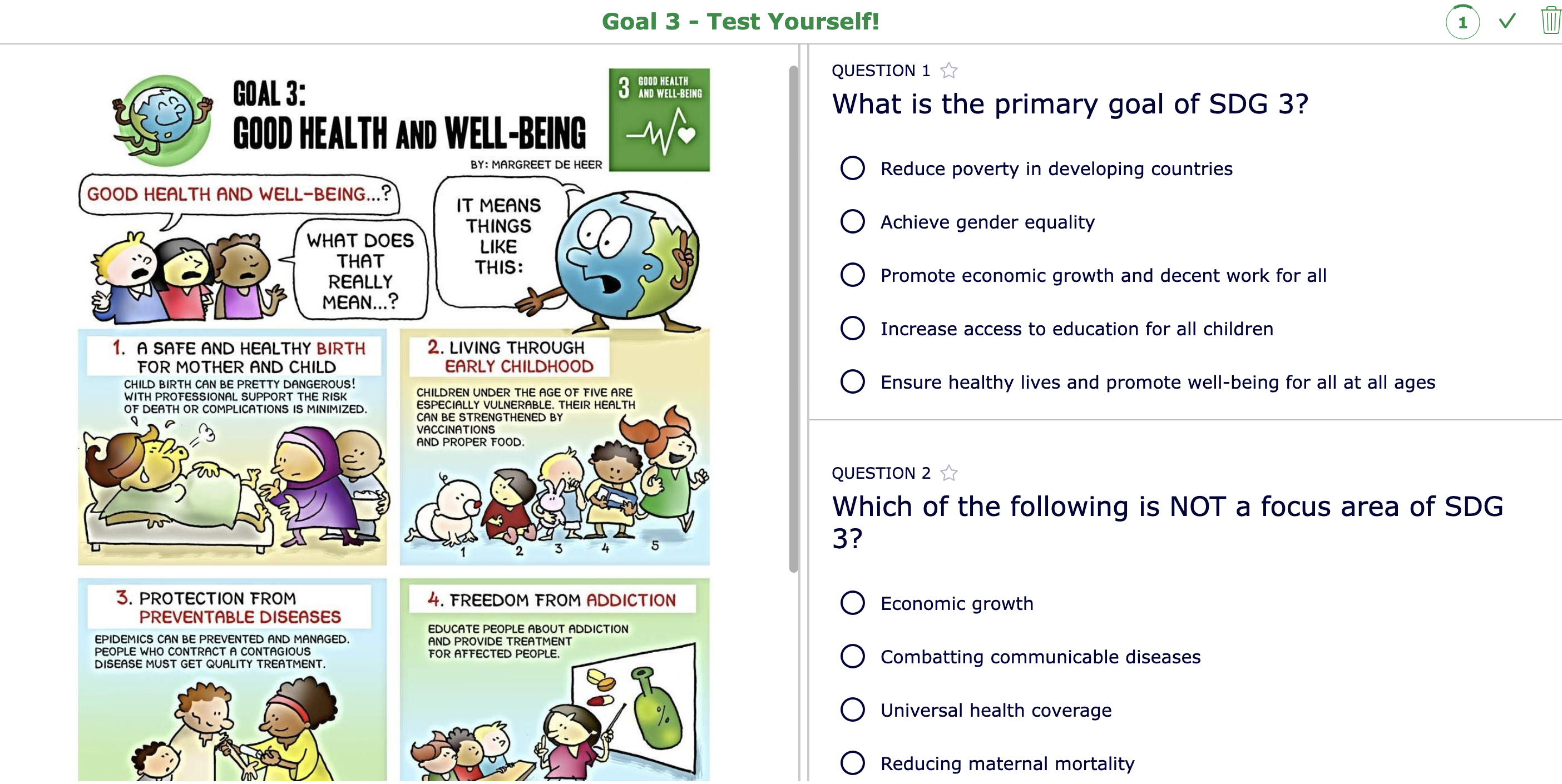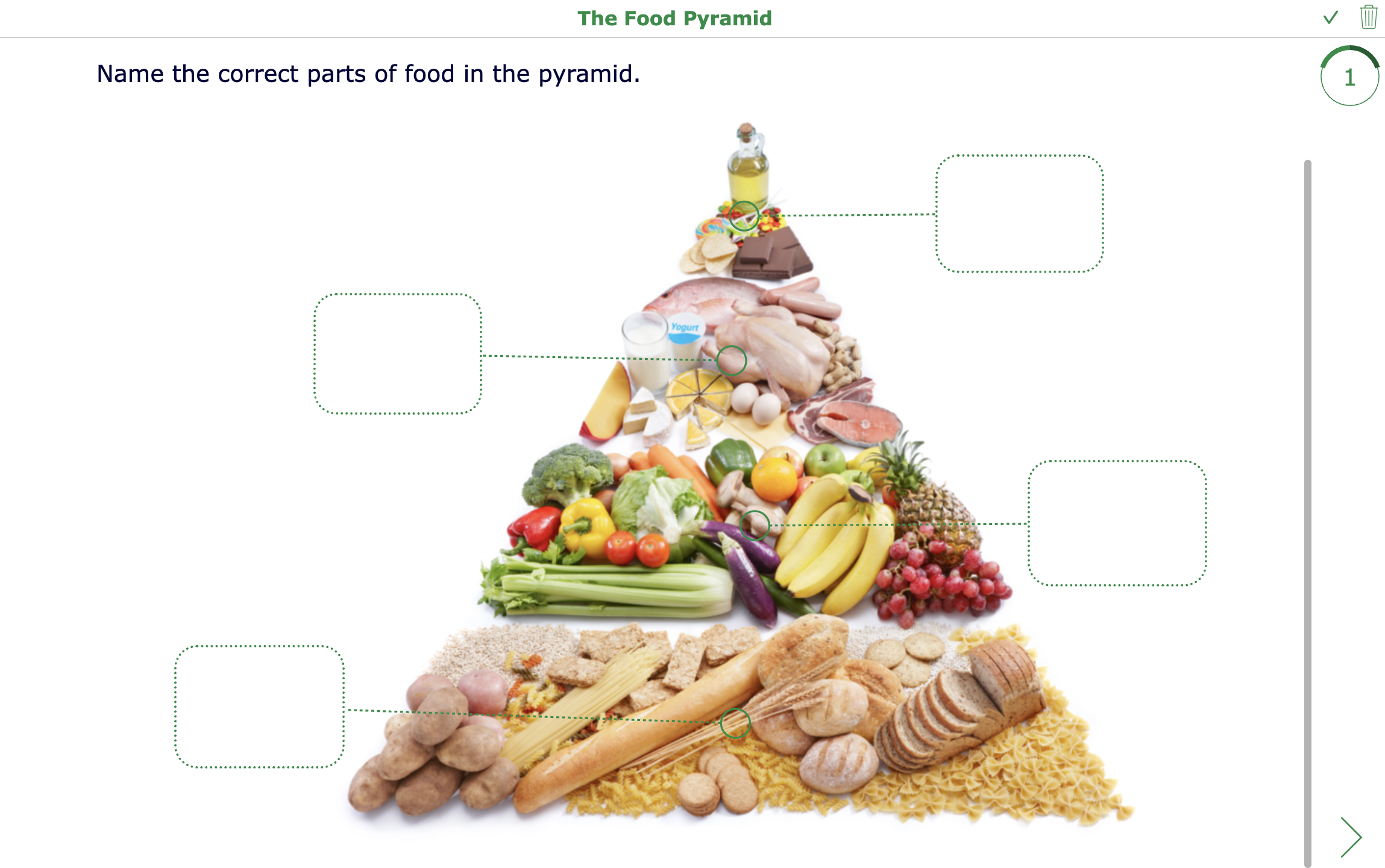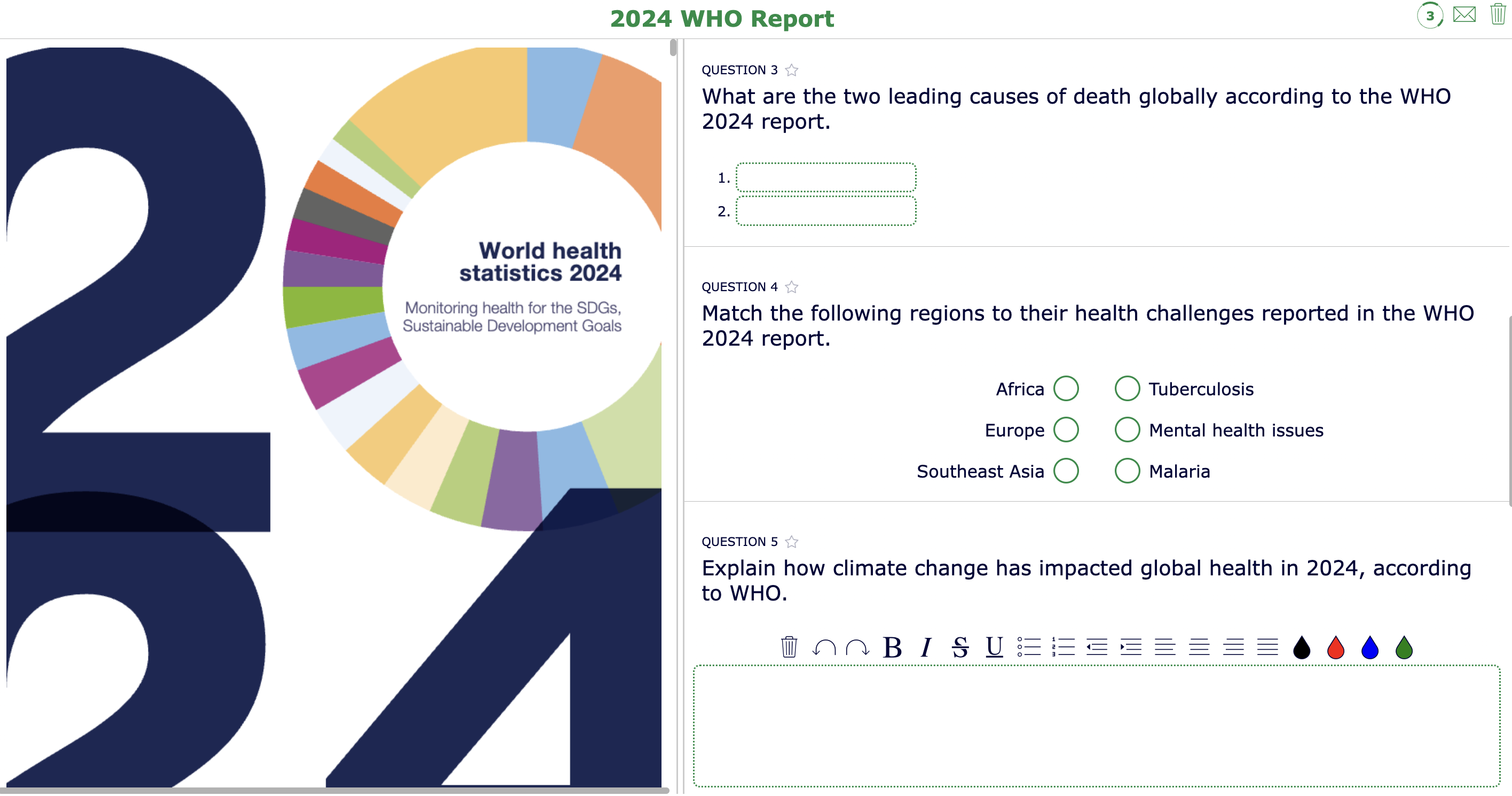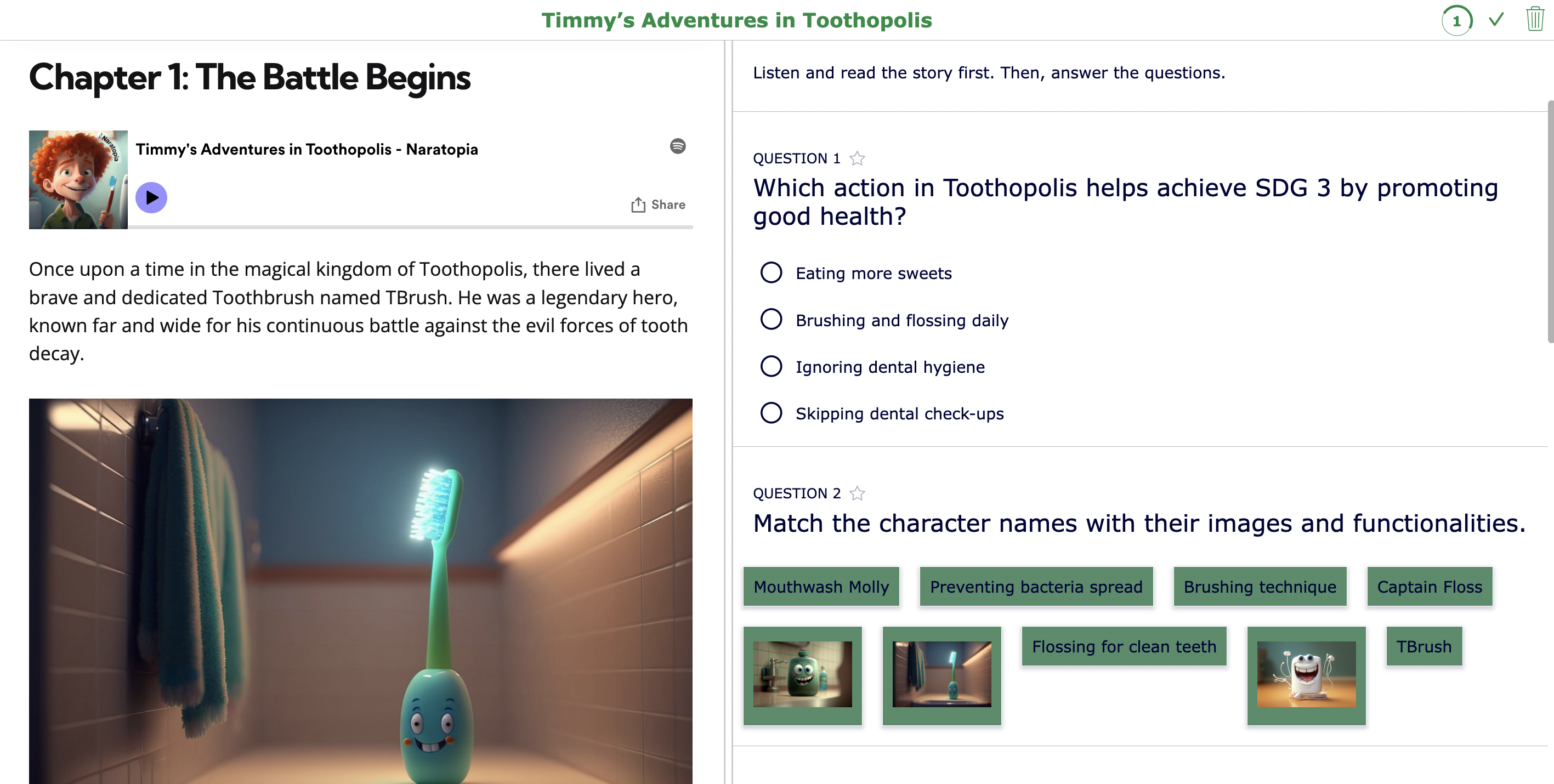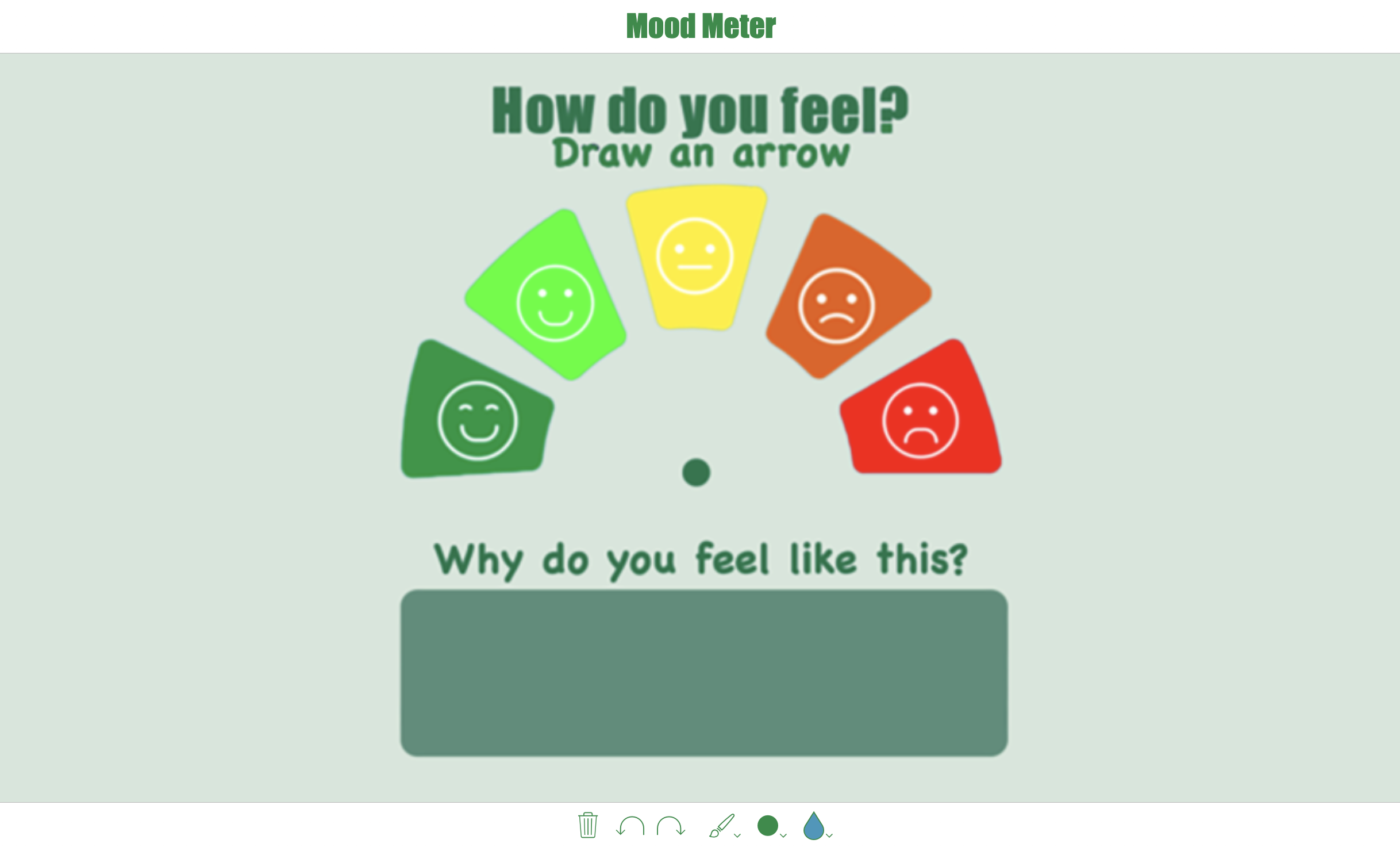8 Free Lesson Plans to Teach "SDG 3: Good Health and Well-being"
 Lucie Renard —
Lucie Renard —
Teaching about the Sustainable Development Goals (SDGs) is more than just sharing information—it’s about preparing students for a future where they can actively contribute to a better world. SDG 3, which focuses on “Good Health and Well-being,” is a fundamental goal for ensuring people live healthy lives at all ages. For teachers, finding the right tools and strategies to teach this goal can be a challenge.
In this post, you’ll find 8 free and interactive lesson plans designed to help your students understand and engage with SDG 3. Plus, we’ll share additional resources to keep your classroom buzzing with ideas about health and well-being.
💡 The digital activities are created with BookWidgets, a content creation and evaluation tool for teachers. You can make a copy of the lessons below to your free BookWidgets account, or you can navigate to this BookWidgets group folder where you can find them all together. This allows you to duplicate the activities, make changes (language, instructions, settings) when needed, and share it with your students. This way, you will also receive the results and be able to provide student feedback.
Make sure to check out more lesson resources and activities on the SGDs:
- 8 Engaging Lesson Plans to Teach “SDG 1: No Poverty” to Your Students
- 8 Creative Ways to Teach “SDG 2: Zero Hunger” to Your Students
- Understanding and Teaching the 17 Sustainable Development Goals (SDGs)
- 10 Ready-to-use Lesson Plans on the Sustainable Development Goals
Now, let’s get started!
What is SDG 3: Good Health and Well-being?
Sustainable Development Goal 3, or SDG 3, aims to “ensure healthy lives and promote well-being for all ages.” It covers a range of topics, from reducing child mortality and ending the epidemics of AIDS and tuberculosis to promoting mental health, preventing substance abuse, and addressing health emergencies.
Understanding SDG 3 means taking a holistic approach to health, looking beyond physical health to include mental, emotional, and environmental factors. It’s about ensuring that students grasp the importance of health and well-being on both personal and global levels.
Integrating SDG 3 into your lessons helps students:
- Develop a deeper understanding of health challenges worldwide.
- Learn about the importance of mental and emotional well-being.
- Explore solutions to current health crises, including pandemics and non-communicable diseases.
- Reflect on the importance of health equity, especially in marginalized communities.
Check out this checklist with all the themes and goals set for SDG 3.
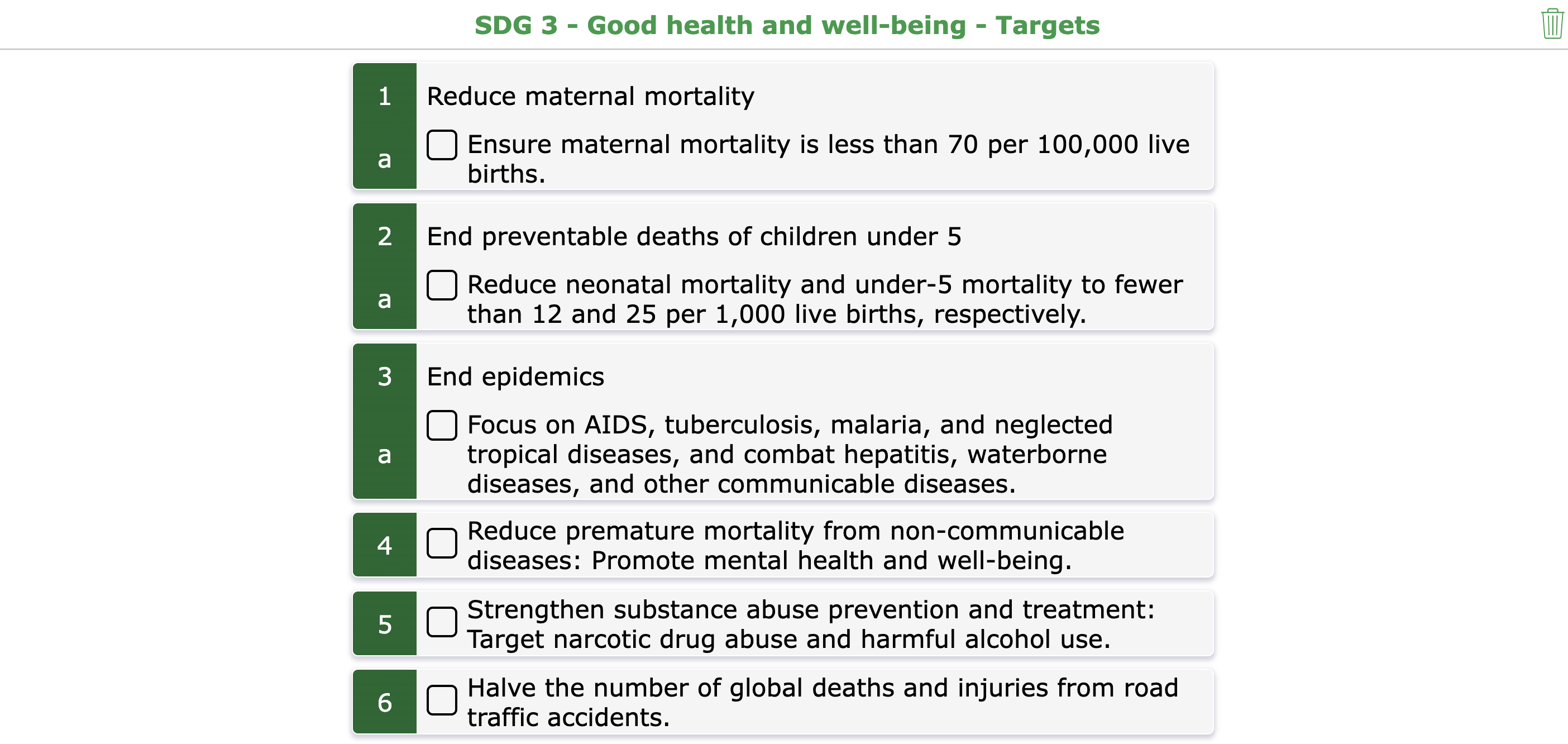
8 Free and Interactive Lesson Plans to Teach “SDG 3 - Good Health and Well-being”
Most of these SDG 3 lesson plans are designed to teach students about this sustainable development goal - Good Health and Well-being. However, some of the digital lessons are more tailored for you to play your part in making sure this goal is met in your classroom. Obviously, you’ll play just a small part, but… even a small change is a change. As a teacher, you have the power to check your student’s well-being and make a positive impact on their mental health.
⚠️ Some of these lesson plans on SDG 3 can detect real-life issues with your students. When you’re not a psychologist or therapist, direct a student to a proper help institution or certified professional.
1. SDG 3 - Multiple choice quiz
This Split Worksheet multiple choice quiz is a good lesson starter so students get to know what SDG 3 is all about. Student may use the internet to find answers. This means they will also practice comprehensive reading skills, and digital skills as they have to use the correct internet search terms and skim through information. Go over it in group when your students completed the activity. This activity is suited for grade 6 to grade 12 students.
2. World Health Day
This lesson activity is a WebQuest on World Health Day. An awareness day that is the perfect fit when teaching SDG 3. In this digital lesson, your students learn about World Health Day, watch important campaign videos and complete a digital worksheet to demonstrate understanding. You can also opt to watch the videos as a group first, before letting your students complete the worksheet individually. This SDG 3 activity is suited for grade 8 to grade 12 students.
3. Food Pyramid
Discover an engaging and educational activity that teaches students about the food pyramid while promoting healthy lifestyle choices linked to SDG 3 – Good Health and Well-being. This activity encourages students to explore the importance of balanced nutrition, the role of different food groups, and how maintaining a proper diet supports overall health while keeping an open mind on different nutrition perspectives.
Good nutrition is crucially linked to SDG 3 (Good Health and Well-being) because a balanced diet helps prevent malnutrition, obesity, and non-communicable diseases like diabetes, heart disease, and certain cancers. Proper nutrition boosts immune function, supports healthy development in children, and enhances overall well-being. By promoting sustainable food systems and ensuring access to nutritious foods, SDG 3 addresses the root causes of health disparities and aims to reduce premature deaths and improve quality of life worldwide. A well-nourished population is fundamental to achieving broader health goals.
Although this lesson doesn’t highlight the link between the food pyramid and SDG 3 like I explain above, it’s a good lesson starter to open up a discussion on why a healthy diet is fundamental to achieving the broader health goals.
4. 2024 WHO Report
This split worksheet activity integrates questions from the 2024 WHO report to help students critically analyze global health challenges. The activity aligns with SDG 3 (Good Health and Well-being) by fostering discussions on key health issues like non-communicable diseases, infectious disease control, and healthcare access. Students are encouraged to explore how health policies impact individual and societal well-being while practicing critical thinking and comprehension.
This activity is suited for grade 10 to grade 12 students. You can also share it with adult students.
5. Measure student well-being - Fish emojis
This activity features a 2-question quiz designed to help students reflect on their emotions. The first question uses an emoji fish scale to gauge how students feel, while the second prompts them to explain the source of those emotions. Linked to SDG 3 (Good Health and Well-being), this activity encourages self-awareness and emotional health, which are critical aspects of mental well-being. By understanding their emotions, students can develop strategies for maintaining mental and emotional balance, key components of overall health.
This activity is a good fit for grade 4 to grade 8 students.
6. Timmy’s Adventures in Tootholopis
In this “Timmy’s Adventures in Toothopolis” split worksheet activity, students follow Timmy’s journey to fight tooth decay with the help of TBrush and his friends. The activity links to SDG 3 by emphasizing the importance of dental hygiene as a vital aspect of overall health. Students engage with the story while learning about good oral care practices and how they contribute to long-term physical well-being, preventing health issues related to poor dental hygiene.
This activity is a good fit for grade 3 to grade 7 students. To make the lesson more fit for younger students, you can read the story yourself and solve the questions in group.
7. Bright spots
The Bright Spots Registration Form activity encourages students to identify and record positive moments each day, fostering a mindset of gratitude and resilience. By focusing on the bright spots, students can enhance their mental well-being, aligning with SDG 3, which emphasizes the importance of mental health in achieving overall health. This activity promotes self-reflection and helps students develop a positive outlook, which is essential for managing stress and improving their emotional health.
This activity is a good fit for grade 6 to grade 12 students.
8. Mood Meter
This mood meter whiteboard activity invites students to draw an arrow on a meter scale from 1 to 4 to represent their current mood, followed by an explanation of their choice. This interactive exercise promotes emotional awareness and communication, helping students articulate their feelings. By fostering a supportive classroom environment and encouraging discussions about emotions, this activity aligns with SDG 3, which underscores the importance of mental health and emotional well-being in achieving overall health outcomes.
This activity is a good fit for younger students - grade 3 to grade 6.
More ready-to-use SDG lesson plans and resources
Reminder: this is just part three of a blog post series about teaching the SDGs. I will post a new blog post about the next SDG in line every month. Check out my previous post with free lesson ideas on SDG 1: No Poverty and SDG 2: Zero Hunger.
And if you can’t wait this long on all the other posts, I already created 1 lesson for each SDG in this digital group work planner activity. Here’s the blog post about teaching the SDGs and you can find all the seperate SDG activities in this BookWidgets group folder in case you want to make some changes.
Wrap up
Teaching SDG 3 in your classroom is a powerful way to connect students with real-world health issues while promoting personal well-being. Interactive tools and lesson plans can make the topic engaging and relevant. Whether you’re focusing on mental health, pandemics, or nutrition, these lessons will help your students grasp the importance of good health and well-being.
Remember, All the featured SDG lesson plans are designed with BookWidgets. You can duplicate the SDG lesson plans from this group, adapt them, and share them with your students. You can also create lessons on this topic or any other topic from scratch. Want to learn more about creating engaging lesson activities with BookWidgets?
✔️ Follow BookWidgets on X / Twitter, LinkedIn, Instagram, and join our teacher community on Facebook! ✔️ And, be sure to connect with me, Lucie, on LinkedIn! 👋

